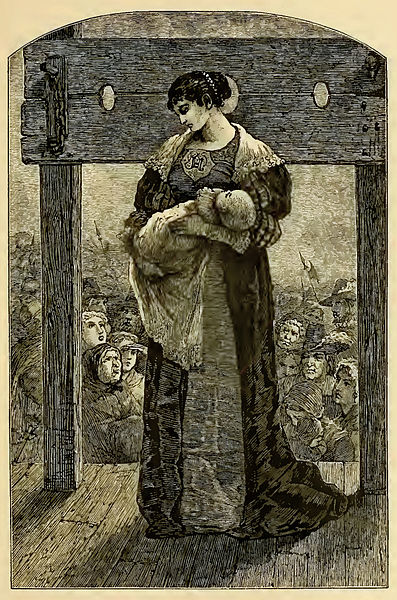
In the mid-1800’s when Nathaniel Hawthorne wrote these words in the Custom House preface to The Scarlet Letter, he could not have imagined the millions of readers a century later who would “think kindly of the scribbler of bygone days” and continue to make his novel a bestseller. The mist of imagination that falls over Salem, Massachusetts in his description is the same aura that permeates the setting of his novel. If you look for the Boston of 1640 in history books, you will not find the magical and Gothic elements that abound in Hawthorne’s story. For the mind of genius has created a Boston that is shrouded in darkness and mystery and surrounded by a forest of sunshine and shadow. In writing The Scarlet Letter, Hawthorne was creating a form of fiction he called the psychological romance, and woven throughout his novel are elements of Gothic literature. What he created would later be followed by other romances, but never would they attain the number of readers or the critical acclaim of The Scarlet Letter.
In The Scarlet Letter, the reader should be prepared to meet the real and the unreal, the actual and the imaginary, the probable and the improbable, all “seen in moonlight with the warmer light of a coal fire changing their hues.” What is truth and what is imagination? This is the Boston of the Puritans: Bible-reading, rule making, judgment framing. Surrounding it is the forest of the Devil, dark, shadowy, momentarily filled with sunlight, but always the home of those who would break the rules and those who listen to their passions. Enter this setting with Hawthorne and ample imagination . . .
In June 1642, in the Puritan town of Boston, a crowd gathers to witness an official punishment. A young woman, Hester Prynne, has been found guilty of adultery and must wear a scarlet A on her dress as a sign of shame. Furthermore, she must stand on the scaffold for three hours, exposed to public humiliation . . .
ASSIGNMENT:
Reflect on thoughts and feelings you imagine Hester Prynne may have been experiencing in this situation. Imagine her humiliation, shock, hurt, shame…
Write at least three paragraphs (3-5 sentences each) as a journal entry, imagining that you are Hester. Write from what you imagine her POV (point of view) to be.
- how well you tell your story
- your use of vivid, descriptive language
- your skillful inclusion of at least two similes or metaphors
- your use of correct spelling and punctuation (+no fragments or run-on sentences)
- correct length and formatting of essay


